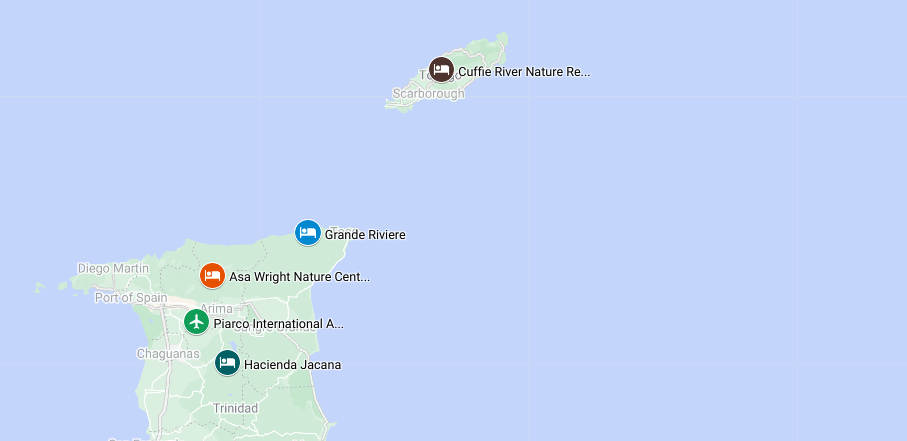- Overview
- Full Itinerary
- Photo Gallery
- Costing
- Travel Details
- Trip Reports
- Guide
- Map
- Know Before You Go
Experience Trinidad and Tobago, the best introduction to tropical birding possible, with our 10-Day/9-night 2-Island Classic Tour. Trinidad, with its proximity to Venezuela, offers a number of species not usually possible on an island (Caroni Marsh, with its daily Scarlet Ibis Spectacular, is an iconic destination in itself), while Tobago feels entirely different — classic Caribbean. Combined, these islands provide a variety of habitats that yield dramatic diversity. In many ways it feels like two vacations in one!
This is a true “great lodge” trip with time immersed in nature. We’ve booked three nights each at three nature lodges giving you time to soak it all in—we know it’s a wonderful way to travel without constant packing and moving. We are pleased to announce the Asa Wright Nature Centre Lodge is open after its long closure during the pandemic. We pair this during time on Trinidad with Hacienda Jacana, a smaller lodge intimately nestled in nature by a pond that is perfect for exploring the lowland field sites with less driving and more field time. Enjoy the contrast of the mountains of the Northern Range and the best of tropical lowlands before taking the short flight over to Tobago where we end at one of our favorite lodges of all times, the Cuffie River Nature Retreat.
Spend time with toucans, trogons, manakins, colorful tanagers, elegant seabirds, and more. See over a dozen species of dazzling hummingbirds including the tiny Tufted Coquette and the brilliant Ruby Topaz. Endemic Trinidad Motmot may stare at you as you take a swim in the pool at Cuffie River Nature Retreat! From the Hacienda Jacana we offer an optional early field trip over to Grand Riviere for those seeking sightings of endemic Trinidad Piping-Guan.
A Naturalist Journeys guide joins local experts with 7 or more participants. Please note we will do all activities outlined in this itinerary but may adjust day to day to be flexible to weather or birding opportunities. Our typical group size is 6-10 clients.




- "Our Trinidad & Tobago trip was simply marvelous. Jason Radix is a joy to work with. Dave Ramlal is an amazing guide & very kind person. His patience with my birding skills was much appreciated! Zolani Frank also has amazing birding skills & much patience! Desmond kept us chuckling as he found bird after bird! Andy’s jolly demeanor made the ride to the airport zing along. You have a wonderful group of employees & very special lodges on these islands. And the food- yum!" — 2023 Travelers
- "Great guides. Wonderful traveling companions. Terrific birds. The food was delicious. Got to taste authentic Trinidad food." — Loretta Selinger, 2023 Traveler
- "Amazing in every way possible. This is a trip that combines some of the best birding imaginable with careful, ethical planning and many encounters with the everyday life of Trinidad and Tobago. Afterward, I felt blessed to have been able to talk with people from wildly different backgrounds, both American and Trini. The meals are wonderful and virtually all local, everyday cuisines--no fast food here at all. The guides and hosts are tops in my book--helpful, knowledgeable, committed, and kind." — Chuck Anderson, 2023 Traveler
Tour Highlights
- Tour Highlights on Trinidad
- Experience outstanding birding from cozy cottages at Hacienda Jacana and the Asa Wright Nature Centre as our base for exploring the mountains, savanna, and mangroves of Central Trinidad
- Enjoy big vistas and the iconic Bearded Bellbird up in the mountains of Trinidad’s Northern Range
- Bird in varied habitats from savanna to mangroves, lowland forest to mountain terrain
- Dine in a local village known for making quality chocolates and great birding
- Discover intimate views and potential photos of birds at gardens in selected lunch stops, with brilliantly colored hummingbirds, honeycreepers, tanagers, toucans, and more
- Discover the enigmatic Oilbird roosting at Dunstan Cave in Trinidad’s Northern Range
- From November to April witness skies turned crimson with thousands of Scarlet Ibis coming in to roost in Caroni National Park as you glide through mangroves on a quiet boat ride
- From April to July see the amazing spectacle of nesting Leatherback Turtles
- Find the tiny Tufted Coquette and other species of hummingbirds
- Tour Highlights on Tobago
- Arrive to a frenzy at Cuffie River Resort’s feeders, perfect for observation and photography and a great place to see the beautiful Ruby Topaz
- Enjoy creative tropical architecture; let the breeze be your ventilation in this peaceful mountain retreat
- Take a swim—from the pool watch Trinidad Motmot, Rufous-vented Chachalaca, and Orange-winged Parrot
- Marvel at dinner guests that may include (just outside) a White-tailed Nightjar or Common Potoo
- Visit Tobago’s historic Main Ridge Forest Preserve and Little Tobago Island with experienced, local guides, followed by a boat ride to land and observe seabirds on Little Tobago Island




Trip Itinerary
Itineraries are guidelines; variations in itinerary may occur to account for weather, road conditions, closures, etc. and to maximize your experience.
Mon., June 15 Welcome to Trinidad!
Welcome to Trinidad! Upon arrival at Piarco International Airport, you are met at the airport. Drive to your lodgings for the next three nights at the delightful Hacienda Jacana. Tropical air greets you as well, and the adventure begins.
Nestled into nature, Hacienda Jacana’s two-room casitas with kitchen and living room surround a small pond. Even from your porch the birding is terrific! This nature oasis has just four casitas and a few rooms in the main estate house, so our groups stay small (7 – 10). Meals are catered and feature local, delicious Caribbean and “Trini” cuisine. The Hacienda is in an ideal location to start our adventures and field trips and away from the bustle of Port of Spain.
Note: If your flight arrives late, consider arriving a day early (additional cost), and enjoy an unscheduled morning. We recommend a local house with a view of the city for added time. Our guides meet all flights on the tour start date, and also pick up at the Pax Guest House.
Accommodations at Hacienda Jacana (D)
Birds at Hacienda Jacana
Copper-rumped Hummingbird, Gray-cowled Wood-rail, White Hawk, Green-backed Trogon, American Pygmy Kingfisher, Streaked Flycatcher, Violaceous Euphonia, Crested Oropendola, Yellow Oriole
Tues., June 16 Nariva Swamp | Trinidad’s Atlantic Coast
This morning, after breakfast and enjoying the sounds of nature waking up at the Hacienda Jacana, we head out for a full but rewarding day, first visiting a couple of spots in the tropical lowlands habitat and then heading on to agricultural fields and mangroves at Nariva Swamp. We visit some wetland areas and open savannah that makes it fun to explore while providing some interesting new species.
As the day warms up, we drive east, then stop for a picnic lunch and seabird sightings on the beach at Manzanilla. Magnificent Frigatebird and Brown Pelican are the most likely species.
Driving down “Coconut Alley” leads us through beachside habitats before we enter Nariva Swamp. Raptors often perch up on long lines of palms. Here, the Nariva River reaches the sea; freshwater environments of herbaceous swamp and mangrove swamp forest make for spectacular birding. There are some fascinating mangrove habitats to scan from the road and we make several stops along the way. Pygmy Kingfisher and Silvered Antbird are secretive species we hope to find.
Accommodations at Hacienda Jacana (B,L,D)
Birds of the Lowlands
Great Kiskadee, Tropical Kingbird, Carib Grackle, Short-tailed Swift, Cocoi Heron, Savannah Hawk, Gray-headed Kite, Yellow-headed Caracara, Wattled Jacana, Southern Lapwing, Green-rumped Parrotlet, Fork-tailed Palm-Swift, White-winged Swallow, White-headed Marsh-Tyrant, Pied Water-Tyrant, Yellow-chinned Spinetail, Red-breasted Meadowlark, Grassland Yellow-Finch, Ruddy-breasted Seedeater
Gazing out to Sea
Magnificent Frigatebird, Brown Pelican, Leach’s Petrel (rare)
East Towards Nariva
Common Black-Hawk, Yellow-headed and Crested Caracaras, Savannah Hawk, Pearl Kite, Gray-lined Hawk, Plumbeous Kite, Green and American Pygmy Kingfishers, Black-crested Antshrike, Silvered Antbird, Brown-crested Flycatcher, Pinnated Bittern, Black-bellied Whistling-Duck, Purple Gallinule, Yellow-hooded Blackbird, White-tailed Goldenthroat, Long-winged Harrier, Yellow-crowned Parrot, Red-bellied and Blue-and-yellow Macaws
Wed., June 17 Birding en Route to Grand Riviere | Local Birding | Possible Leatherback Turtle Outing
We say goodbye to Hacienda Jacana after breakfast today, perhaps seeing a few more of our favorite local yard birds before we leave. Then, it’s up the scenic east coast of the island toward our final stop this afternoon, Grand Riviere.
We stop at Bajnath Estate Hummingbird Sanctuary in Mature for lunch and birding the grounds as well as enjoying the feeders. You never know what you’ll see here! From the stunning Tufted Coquette to the busy and aggressive White-necked Jacobin, the hummers here are stunning. Recently, a Trinidad Piping-Guan was seen feeding on the grounds. We’ll keep our fingers crossed.
Arriving in Grand Riviere, we settle in, take a gentle walk on the beach or bird the hotel grounds and surrounds. This evening we take to the beach in hopes of seeing the nesting Leatherback Turtles. We don't pass up the opportunity to look for them tonight!
Accommodations at Mt. Plaisir Hotel (B,L,D)
Thurs., June 18 Optional Morning Leatherback Turtle Viewing | Trinidad Piping-Guan | Asa Wright Nature Centre
Those keen to see the Leatherbacks in the daylight can meet at 5:00 AM for sunrise and to possibly witness any last turtles coming to shore to lay this morning. Photography at this time of day is stunning, and you will not regret seeing and capturing memories of these incredible reptiles as they make their way to shore, dig their nests, lay their eggs, cover their nests, and then lumber their way back to sea. The process is fascinating and it feels like a true privilege to get to see this intimate moment for such a vulnerable species.
We then make our way from the beach, up the road a ways to search for the critically endangered and endemic Trinidad Piping-Guan. Grand Riviere is a stronghold for this bird, and we have an excellent chance to find them here at a local estate where their favorite food plants, including Wild Nutmeg trees, regularly attract them. While endemic Trinidad Piping-Guan, known locally as Pawi, lure us to this side of the island there are some other excellent forest birds to see here as well.
After lunch we say make our way to the renowned Asa Wright Nature Centre, high above Arima, to step out onto the Centre’s famed verandah to see a grand view and great cast of avian wonders. Many flowering and fruiting trees planted around the Centre grounds help bring species in. Settle into your accommodations, then enjoy tea and rum punch served with the birds as you watch the sunset.
Accommodations at the Asa Wright Nature Centre, Arima (B,L,D)
Bird Highlights at Grand Riviere
Trinidad Piping-Guan, Southern Lapwing, Lilac-tailed Parakeet, Gray-headed and Plumbeous Kites (in season), White Hawk, Bat Falcon, Lineated and Crimson-crested Woodpeckers, Grayish Saltator, Silvered and White-bellied Antbirds, Black-tailed Tityra, Trinidad Euphonia, mixed flocks of colorful tanagers
Fri., June 19 Birding Trinidad's Northern Range | Blanchisseuse Road from the Asa Wright Nature Centre | Brasso Seco Village
Today we pack up and head into the mountains. Our scenic, day-long excursion takes us high into the Northern Range on the Blanchisseuse Road. Stately trees arch over the shaded road and views from overlook points are grand. We make frequent birding stops and enjoy a local lunch in the picturesque village of Brasso Seco (with four or fewer participants a picnic lunch is provided). We continue through the mountains to the village of Morne la Croix to enjoy watching parrots fly in to roost.
Today also offers the opportunity to examine other species, perhaps the strange world of leafcutter and army ants or bright colored land crabs catch your eye. The abundance of tropical life surrounds you—observe or photograph butterflies, orchids, and other tropical flora.
In the late afternoon we arrive back at the Asa Wright Nature Centre and settle into our cottages. Enjoy a fine view off of the Verandah. Rum punch is served at sunset and dinner is served in their spacious dining room. After dinner, enjoy an evening presentation or possibly a night walk to see nocturnal species.
Accommodations at the Asa Wright Nature Centre, Arima (B,L,D)
Sat., June 20 Morning at AWNC | Caroni Swamp for Scarlet Ibis
We enjoy a morning on the grounds of the Centre; enjoy a slow coffee or tea on the verandah, walk the Centre trails with a local guide, even the paved entrance road can be incredibly productive.
After lunch, we embark to on a memorable fieldtrip to see the Scarlet Ibis at Caroni. En route, we stop for some birding at local patches, including a golf course. To see Caroni National Park in the most intimate way, we bird by boat (watch for Ruschenberger’s Tree Boa and Silky Anteater, too), then moor up at a quiet spot in the mangroves to let the sunset show begin. Hundreds, and sometimes thousands, of Scarlet Ibis cloud the sky as they fly into an island to roost. Tonight’s experience is one you won’t soon forget, often rated among the world’s top birding spectacles. Dinner tonight is on the boat with the birds.
Accommodations at Asa Wright Nature Centre (B,L,D)
Sun., June 21 Oilbird Cave | Tobago & Cuffie River Nature Retreat
This morning, we plan to visit Dunstan Cave on the grounds of the Centre, one of Trinidad’s major colony sites for Oilbird, a unique species in that it is a nocturnal, fruit-eating bird. This colony has been monitored for many years. Enjoy a chance to learn about their ecology and conservation. The trail to the cave is steep in some locations, so wear secure footwear especially in wet conditions. We take it at a birder’s pace and if you are not up to it, feel free to enjoy free time on the verandah or grounds at your leisure. There is also a nice freshwater pool for those that want to take a cooling swim!
In the afternoon we head for the idyllic (scenic!) island of Tobago. It’s a short 25 minute flight from the Port of Spain airport’s domestic terminal, and Jason Radix, our excellent naturalist for this part of the journey is there to greet us. Settle into your spacious rooms at the Cuffie River Nature Retreat and catch the daily fly-in of Orange-winged Parrot and more as the sun goes down.
Local food is just delicious here and evening meals are a treat. If we are lucky night birds such as Common Potoo may appear in the lights of the lodge as we dine!
Accommodations at the Cuffie River Nature Retreat (B,L,D)
Common at Cuffie’s Feeders
White-tailed Saberwing, Ruby Topaz Hummingbird, White-necked Jacobin, Bananaquit, Spectacled Thrush, Barred Antshrike, Common Potoo
Mon., June 22 Cuffie River Trails & Adventure Farm | Wetland Birding
In keeping with Tobago’s laid-back vibe, today is easy-going. In the morning we explore a nature trail close to the lodge, walking from the entry with the lodge’s expert guide, Desmond Wright. While we never move faster than a birder’s pace, the trail is up and down small hills, so a walking stick may be handy.
Return to the lodge for a delicious lunch and brief rest before traveling off site to Adventure Farm, a delight for birders and the culinary-inclined. The farm is a mix of varietal fruit trees rimmed by natural forest. Enjoy a winding trail through the property spending time at fruit and hummingbird feeders. Tropical Mockingbird provide a serenade. This location is a favorite for photographers.
Keep your binoculars handy as we may have time for some wetland birding stops. Walk around well-placed ponds that attract ducks, wading birds, and possible Spectacled Caiman. We always add several species as we explore.
Be sure to be at a good viewpoint for sunset, as hordes of parrots, parrotlets, and noisy chachalacas fly here to roost—quite a spectacle! After dark, check the driveway’s streetlight for night birds.
Accommodations at Cuffie River Nature Retreat (B,L,D)
Cuffie River Bird Highlights
Rufous-tailed Jacamar, White-tailed Sabrewing, Blue-backed Manakin, Yellow-legged Thrush, Rufous-vented Chachalaca, Ruby Topaz Hummingbird, Collared Trogon, Red-crowned Woodpecker, White-fringed Antwren, Orange-winged Parrot, Fuscous, Yellow-breasted, and Venezuelan Flycatchers, Caribbean Martin, Scrub Greenlet, Common Potoo, White-tailed Nightjar
Wetland Bird Highlights
Black-bellied Whistling Duck, Green and Tricolored Herons, White-cheeked Pintail, Least Grebe, Southern Lapwing, Eared Dove
Tues., June 23 Gilpin Trace on Tobago’s Main Ridge Preserve | Little Tobago Island from Blue Waters Inn
We have an early breakfast and head out for our drive high into the mountains in the historic Tobago Main Ridge Forest Reserve, the world’s oldest legally protected forest. Scientific American once said that “the protection of Tobago’s Forest was the first act in the modern environmental movement.” In 2022, UNESCO named much of Northeast Tobago part of a new Man and the Biosphere Reserve.
Tobago’s montane forests are home to 210 species of birds. On a trail into the forested interior, we look for several elusive species, including White-tailed Sabrewing, a large hummingbird once thought to be extinct. We have chances for this near-endemic on our Main Ridge Forest Reserve trip, and even better chances at the feeders and flowers of our lodge, Cuffie River Nature Retreat.
We also seek out Blue-backed Manakin, Yellow-legged Thrush, and other Tobago specialties, including Red-crowned Woodpecker and White-fringed Antwren. After a satisfying walk, we then travel through vibrantly colored hillside villages to the dock at Blue Waters Inn, where we board a glass-bottom boat for a pleasant cruise to Little Tobago Island. The island, one of the country’s most significant wildlife sanctuaries, offers incredible views of plentiful and rare seabirds, both from the boat and by walking a trail up to a lookout point on the island, where Tropical Dry Forest occurs.
Leaving the island (if sea conditions are right), the captain takes time to look for colorful fish and possible Hawksbill Sea Turtle as we pass a former coral garden off Goat Island. The Atlantic side of the island has experienced extensive coral bleaching and while it’s still excellent for divers, snorkeling is not what it once was.
After a long but fulfilling day, we head back to our delightful digs and another delicious meal at Cuffie River Nature Retreat. Tonight is our farewell dinner and we share highlights, favorite birds, and favorite moments of the journey.
Accommodations at Cuffie River Nature Retreat (B,L,D)
Main Ridge Forest Reserve Bird Highlights
Trinidad Motmot, Collared Trogon, White-tailed Sabrewing, Blue-backed Manakin, Yellow-legged Thrush, Red-crowned Woodpecker, White-fringed Antwren, Plain Antvireo, White-throated Spadebill, Olivaceous Woodcreeper, Stripe-breasted Spinetail, Golden-olive Woodpecker, Rufous-breasted Hermit, Rufous-breasted Wren
Around Little Tobago Island
Brown Noddy, Red-billed Tropicbird, Red-footed and Brown Boobies, Sooty Tern, Chivi Vireo, Brown-crested Flycatcher, Pale-vented Pigeon, Roseate and Bridled Terns, Scaly-naped Pigeon, Audubon’s Shearwater sitting in its burrow (if we’re lucky).
Wed., June 24 Departures
After a filling breakfast, bid farewell to Tobago. We arrange drivers for you to connect to the flight you schedule. International flights out of POS must be booked out today AFTER 10:00 AM. You need to leave time for the inter-island flight from Tobago back to Port of Spain. Book the flight from Tobago to coordinate with your outbound International as soon as possible; the first flight out is typically 7:00 AM and they usually run about every hour. If you see an early morning international flight that you want, you can enjoy the day at our nature lodge, go back to an airport hotel (additional cost) in Port of Spain and fly out the next day. Regardless of when you go, you need time in Port of Spain to collect luggage and check in with your international carrier. The 10:00 AM rule is firm.
Your departure time is confirmed the night before with the front Desk to arrange your return transfer. Late check-out may be available for you for an additional fee, to be arranged with the front desk at the time of your visit. Luggage can be stored if you plan activities ahead of later flights. (B)
Cost of the Journey
The cost of this journey is per person, based on occupancy: $5,990 DBL / $6,970 SGL, from Port of Spain, departing Tobago Crown Point. The tour cost includes all accommodations; meals as specified in the itinerary, group airport transfers, professional guide services, local park and other area entrance fees, the internal flight to Tobago, and miscellaneous program expenses.
NEW! all tips other than your NJ guide (optional) and local guide are included (this includes tips for your driver, lodge and staff, day activities, meals and other services).
The tour cost does not include transportation to Trinidad or from Tobago, or items of a personal nature like laundry or beverages from the bar.
*This tour is limited to two single rooms.
Travel Details
Please plan to make air travel plans only after the minimum group size has been met. We will send you a confirmation email as soon as the trip has been confirmed.
Arrival Airport: Port of Spain, Trinidad (POS)
Arrival Details: Plan your flights to arrive June 15, 2026 at your leisure.
Departure Airport: ANR Robinson International Airport, Tobago (TAB) for a short flight over to POS where you connect with international flights
Departure Details: Plan your international flights to depart POS on June 24, 2026 after 10:00 AM. You need to book a short inter-island flight segment on the Caribbean Airlines website to coordinate with your international from POS.
Travel Tips: For your departure, the first flight off Tobago is approximately 7:00 AM on Caribbean Air. It is a 25-minute inter-island flight. If you are on Caribbean Air all the way home, you can connect with a 9:00 AM Caribbean Air flight onward. They do not transfer luggage so for all other carriers you may not book international flights out before 10:00 AM. You need time to collect luggage at POS and check back in with your outbound carrier. It is important to also book the Tobago flight back to Trinidad on Caribbean Air (easy to do the airline website – flights run at least hourly). Note that making flights is time sensitive to get choice flights. Time this booking to work with your international flight – allow three hours. For example, if you have a 2:00 PM flight, leave Tobago not later than 11:00 AM. If you have an 11:30 PM flight, you can stay on Tobago, enjoy the day, purchase your lunch at Cuffie River and go back after 6:00 PM. The TAB to POS flights run every hour.
Entry Requirements: See "Essential Information" section under the "Know Before You Go" tab.
Items of Note
Pace of the Journey & Guides
This is an itinerary focused on birding with some nice cultural elements added in. At all locations, the lodges are pleasant places to bird and explore at leisure if you do not want to participate in the trips away. To fully participate you should be able to get in and out of vehicles multiple times a day with ease, walk 1-3 miles over uneven terrain, and have a flexible attitude towards the weather – this is a tropical rainforest so there will be a need to adjust birding at a time to let rains pass by. We support local guides! With groups of less than 7 we use our local expert guides who we have worked with for many years. With 7 – 10 we add a Naturalist Journeys guide.
Browse below for trip reports and species lists from past versions of this and other tours from this destination.
Trinidad & Tobago
- June 2011
- December 2014
- February 2015
- March 2015
- March 2017 (Trinidad Only)
- January 2018
- December 2018
- January 2020
- March 2020
- December 2022
- March 2023
- April 2023
- June 2023
- November 2023 (Thanksgiving Trip)
- December 2023 (Christmas Tour)
- January 2024
- February 2024
- April 2024
- June 2024
- November 2024 (Thanksgiving Tour)
- January 2025
- February 2025
- March 2025
- May 2025
- June 2025 (Intro to Biodiversity)
- November 2025
-
James P. Smith

James brings some twenty five years of guiding experience to Naturalist Journeys. Originally from Sheffield in the United Kingdom, he discovered a love for guiding in Israel in 1995 where he helped establish the Kibbutz Lotan Center for Birdwatching in the Southern Arava Valley. Since then, he’s led hundreds of tours throughout the Northern Hemisphere for a number of UK-based tour companies. His trips to Israel and North America are especially close to his heart but he’s also led or co-led tours to Mexico (Veracruz), The Gambia, Kenya, Iceland, Scottish Highlands, Spanish Pyrenees, Central/Southern France, Greece (Lesvos), and India (Goa). An accomplished illustrator, James placed runner-up in the British Birds “Bird Illustrator of the Year” competition in 1992 and went on to have his work published in numerous birding magazines and journals. He also co-authored the two volume set A Guide to the Birding Hotspots of Israel (Published in 2000 by the Israel Ornithological Center and the S.P.N.I.). He returns to Israel every year to lead trips and remains an active member of the Israel Rarities and Distribution Committee. When not leading tours he can be found at home in Western Massachusetts with his wife Susannah and their young son Matan.
Other trips with James P. Smith
-
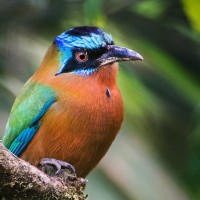 Trinidad & Tobago: Incredible Birds & Wildlife CLOSED - See our other January departure!January 4 - 13, 2026
Trinidad & Tobago: Incredible Birds & Wildlife CLOSED - See our other January departure!January 4 - 13, 2026 -
 Belize: Three Great Lodges FULL - See our March departure!February 18 - 28, 2026
Belize: Three Great Lodges FULL - See our March departure!February 18 - 28, 2026 -
 Colombia: Santa Marta & the Atlantic CoastMarch 10 - 20, 2026
Colombia: Santa Marta & the Atlantic CoastMarch 10 - 20, 2026 -
 Texas Coast & Big ThicketApril 15 - 23, 2026
Texas Coast & Big ThicketApril 15 - 23, 2026 -
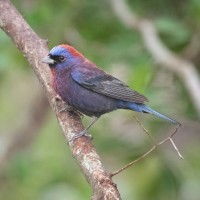 Texas Hill CountryApril 24 - 29, 2026
Texas Hill CountryApril 24 - 29, 2026 -
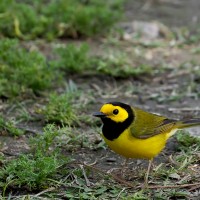 Cape May: Spring MigrationMay 12 - 18, 2026
Cape May: Spring MigrationMay 12 - 18, 2026 -
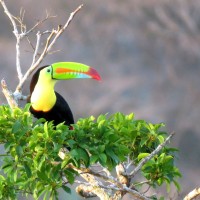 A Week at Belize's Black Rock Lodge A Short & Sweet Summer Birding BlitzJuly 19 - 25, 2026
A Week at Belize's Black Rock Lodge A Short & Sweet Summer Birding BlitzJuly 19 - 25, 2026 -
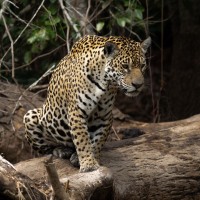 Brazil’s Pantanal: Jaguars! And More… FULL - See our June Departure!August 15 - 25, 2026, w/Amazônia extension
Brazil’s Pantanal: Jaguars! And More… FULL - See our June Departure!August 15 - 25, 2026, w/Amazônia extension -
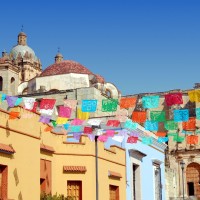 Grand Oaxaca: Valley, Mountains & Coast October 19 - 30, 2026
Grand Oaxaca: Valley, Mountains & Coast October 19 - 30, 2026
-
Essential Information +
Pace & Protocols +
Packing List +
Suggested Reading List +
Useful Links +
Photo credits: BANNERS: Scarlet Ibis (Hugh Simmons), Smooth-billed Ani (Hugh Simmons), Leatherback Turtle (Howard Topoff), Blue-gray Tanager (Glenn Chambliss), Flamingos (Hugh Simmons), Red-billed Tropicbird (Hugh Simmons), Group Birding (Hugh Simmons) THUMBNAILS: Purple Honeycreeper (Peg Abbott), Scarlet Ibis, Trinidad Motmot (Hugh Simmons), Masked Cardinal (Hugh Simmons), White-bearded Manakin (Hugh Simmons), Bay-headed Tanager (Hugh Simmons), Channel-billed Toucan (Faraaz Abdool), Common Black Hawk (Hugh Simmons)








































